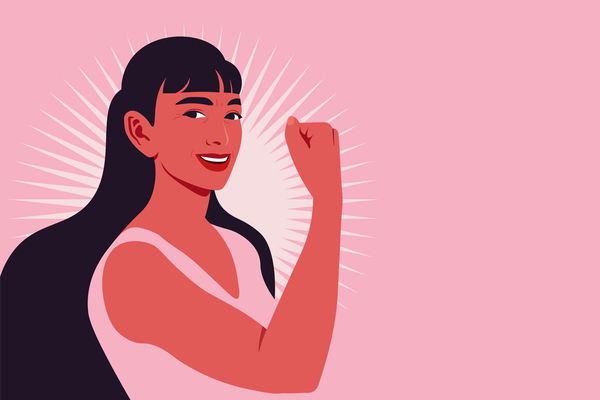With the new year in full swing, many of us are looking to cut ties with old habits and put new ones in place for a happier, more productive life. Fortunately, there’s no shortage of reading material on the subject of self-improvement.
With expert insights from therapists and life coaches, HealthyWomen has assembled a list of five books that will help you create healthy habits — and put the bad ones to bed for good.
1. “Atomic Habits: An Easy & Proven Way to Build Good Habits & Break Bad Ones” by James Clear
“Atomic Habits” is the perfect book for people who are short on time but drowning in bad habits. It’s clear, broken down into easy concepts, and teaches readers how to create major life transformations through small, actionable changes.
“I think the most important takeaway from this book is the idea that you can make an identity shift through small changes,” said Emily Sharp, LCAT,, an art therapist and psychotherapist. “In other words, you can change who you are through what you do. ‘Your habits shape your identity, and your identity shapes your habits.’ This is especially salient for women over 35, who might feel like [their] patterns are too ingrained to change. Taking tiny steps, which can ultimately lead to a change in identity, helps women build confidence and self-esteem, and can generally lead to a more positive outlook.”
2. “The Spirit of Kaizen: Creating Lasting Excellence One Small Step at a Time” by Robert Maurer
Kaizen is a Japanese term meaning continuous improvement, and it’s actually a beautiful philosophy for developing — and building upon — new habits. This book is all about how to fight the resistance to change by making gradual modifications our brains will barely notice at first. In time, these little adjustments will amount to major adaptations and eventually whole new ways of being.
“Maurer explores the science behind behavior change and provides simple tips and strategies that can help you make gradual, sustainable changes to your daily habits,” said Miriam Geiger, LMFT, LPCC, a psychotherapist. “Whether you’re trying to eat better, exercise more consistently or make time for a creative hobby, this book can help you achieve your goals by showing you how to take small steps that lead to big results.”
For example, if you want to go for a run every morning, the first step per the spirit of Kaizen is to simply put on your running shoes every morning for several days in a row, then just go about your morning as usual — without going for a run.
“Once putting on your [running] shoes becomes a habit you don’t have to think about, you can add in other things, like putting on your running clothes and doing some warmup stretches,” Geiger said. “But notice, you have not gone for a run yet. The key is to take it slow, and sneak up on yourself so that your brain doesn’t perceive the new habit as a threat.”
3. “The 7 Habits of Highly Effective People” by Stephen R. Covey
If you’ve ever heard of a book about habits, chances are strong it was this one. This New York Times bestseller has sold more than 40 million copies. It’s a book that explores a system of principles as a way to form new habits and, ultimately, solve problems in both life and business.
“The great thing about this book is that it can help a person become more aware of their own perceptions,” said Sam Nabil, a licensed professional counselor and life and relationship coach. “For example, in a particular struggle, in order for a person to successfully overcome [it], they need to change the way they see themselves and their perceptions. It’s the same concept as the identity-based approach by James Clear [in “Atomic Habits”], in my opinion. The only difference is that changing your identity only needs two steps. In this one, you need to follow seven habits: Be proactive, begin with the end in mind, put first things first, think win-win, seek first to understand then be understood, synergize and sharpen the saw.”
4. “The Power of Habit: Why We Do What We Do in Life and Business” by Charles Duhigg
This book teaches that you can’t extinguish a bad habit, you can only change it. And this is good news, because you absolutely have the power to change it.
“Let’s say a person has been struggling with bad habits for years but wants to extinguish these bad habits in the new year,” Nabil said. “What they can do is identify the cue or the motivation that drives them to do this particular habit. Once they find their main driver, they need to figure out how they can improve their response to this cue or routine. The routine is what gets them their reward. For example, a person smokes cigarettes every time they have their morning coffee. The coffee is the cue, the smoking is their routine and the high they get is the reward. To change this bad habit, they need to consciously understand the cues and rewards that surround the routine. For example, if they can’t stop their routine of smoking cigarettes with their morning coffee, [they must] try finding a replacement for the routine. Exercising is a good replacement because it releases endorphins.”
5. “Elastic Habits: How to Create Smarter Habits That Adapt to Your Day” by Stephen Guise
This book highlights the importance of flexible habits and how they can help prepare you for anything life throws your way. “If a person puts flexibility and resiliency at the core of their habit-forming strategy, they can easily bend these habits and adapt according to what suits their day,” Nabil said. “Just imagine brittle and rigid materials. They shatter easily when they’re bent — as opposed to elastic materials, which are pliable and resilient, and can easily withstand pressure. The same is true with habits. While consistency is key, life happens. [You] need to form habits that can easily survive the turbulence of life.”







